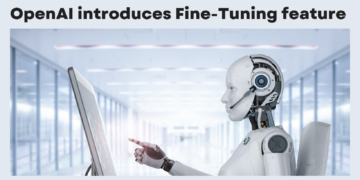The year 2023 witnessed a paradigm shift in the tech world, as generative AI stormed onto the mainstream scene. With 2024 on the horizon, the landscape is poised for explosive evolution, with a wave of transformative trends rewriting the rules of technology and its applications. From the emergence of multi-modal AI to the rise of small language models, these trends will not only reshape the technological landscape but also redefine our interactions, unleash creative potential, and expand our understanding of AI’s true potential.
Multimodal Models
OpenAI’s GPT4, Meta’s LLama 2, and Mistral – these names represent the pinnacle of large language models (LLMs) in 2023. But 2024 ushers in a new era: the era of multi-modal AI. Imagine crafting music by describing its emotional tone, generating a video script from a painting, or composing a poem inspired by a photograph. Multi-modal models make this a reality, blending text, audio, image, and video into a creative melting pot.
This shift transcends traditional single-mode functions, embracing diverse data types to make predictions and generate outcomes with unparalleled finesse. GPT4-V, already a hit among ChatGPT Plus users, showcases the power of this approach. And on the horizon lies LLava, an open-source multi-modal powerhouse, ready to democratize AI-powered creation.
Small Language Models
While 2023 was the year of LLM behemoths, 2024 marks the rise of the small language model (SLM) heroes. Trained on curated datasets like textbooks and journals, these pocket-sized marvels deliver quality content despite their diminutive size. No longer bound by the noisy terabytes of general internet data, SLMs produce content comparable to their massive counterparts, all while running on less powerful and affordable hardware.
Microsoft’s PHI-2 and Mistral 7B stand tall as SLM pioneers, paving the way for a generation of nimble and efficient AI applications. They’re the unsung heroes of the generative AI world, proving that size doesn’t matter when it comes to delivering impactful results.
Autonomous Agents
Step aside, prompt engineering! Autonomous agents are entering the scene, taking the reins of content creation without human intervention. These self-sufficient software programs, powered by advanced algorithms and machine learning, learn, adapt, and make decisions, all on their own. Imagine an AI artist creating a masterpiece based on emotions it perceives in a real-time conversation, or a scientific AI formulating hypotheses and conducting experiments independently.
Multimodal AI plays a crucial role here, enabling agents to analyze diverse data types and react accordingly. Frameworks like LangChain and LlamaIndex empower the creation of these next-gen AI minds. 2024 promises a new wave of frameworks that leverage multi-modal capabilities, pushing the boundaries of autonomous AI even further.
Open Source
Get ready for a paradigm shift: in 2024, open-source generative AI models will rival their proprietary counterparts. While comparing the two is complex, with factors like use cases and training data playing a role, the gap is steadily closing. Meta’s LLama 2 70B and Mistral AI’s Mixtral-8x7B proved this in 2023, delivering performance on par with giants like GPT 3.5.
This democratization of AI empowers enterprises with an incredible option: hosting generative AI models on-premises or in hybrid environments. The future holds promising iterations from industry leaders like Meta and Mistral, potentially even welcoming new players to the open-source arena, offering viable alternatives to traditional API-based models.
Cloud Native
Kubernetes is the reigning king of hosting generative AI models. But 2024 sees cloud-native infrastructure powered by Kubernetes becoming the ultimate platform for delivering generative AI. Tools like Text Generation Inference from Hugging Face and vLLM pave the way, streamlining model inference within containers.
The year ahead promises mature frameworks, tools, and platforms built on Kubernetes, taking complete control of the entire generative AI lifecycle: pre-training, fine-tuning, deployment, and scaling, all done with remarkable efficiency. Key cloud-native players will provide best practices and optimizations, further solidifying this infrastructure as the future of on-premises Generative AI.
And Beyond…
These five trends are just the tip of the iceberg. 2024 promises breakthroughs in explainable AI, ethical considerations

























